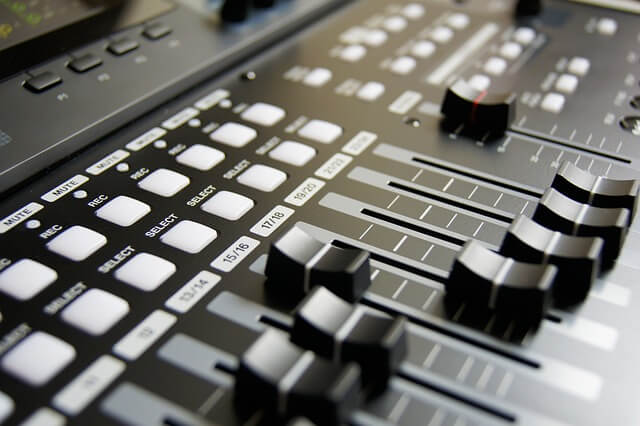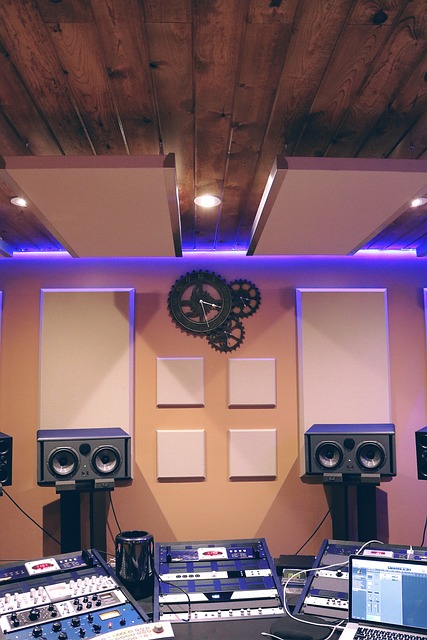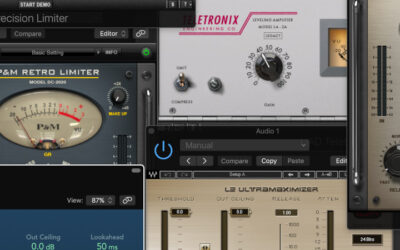MIXING MUSIC
The process of music mixing is a crucial stage in music production where individual audio tracks are combined, balanced, and processed to create a cohesive and polished stereo or surround sound mix. Here is an overview of the typical steps involved in the music mixing process:
- Importing and organizing tracks: The first step is to import the recorded tracks into a Digital Audio Workstation (DAW) software. The mixer then organizes the tracks, assigns them to appropriate channels, and sets up the session for mixing.
- Balancing levels: The mixer adjusts the volume levels of each track to create a balanced mix. This involves bringing out the important elements and ensuring they are audible while avoiding any distortion or clipping. Faders or volume automation are used to control the levels of individual tracks throughout the song.
- Panning: Panning involves placing each track within the stereo or surround sound field. By adjusting the pan controls, the mixer determines the position of each sound source, creating a sense of width and depth in the mix. This allows instruments and vocals to be spread across the soundstage, creating a more immersive listening experience.
- EQ (Equalization): Equalization is used to shape the frequency response of individual tracks. The mixer applies EQ to enhance or reduce specific frequencies, allowing different elements to sit well together in the mix. EQ can be used to add brightness, warmth, or clarity to instruments or vocals and to carve out space for each element to be heard clearly.
- Compression: Compression is applied to control the dynamic range of individual tracks and create a more consistent sound. It helps to even out the levels of a performance, bringing quieter parts up and reducing peaks. Compression can add sustain to instruments, tighten up the sound, and make it more punchy and controlled.
- Effects and processing: The mixer adds various effects and processing to enhance the sound and create a desired sonic atmosphere. This can include reverb, delay, chorus, modulation, and other creative effects. Additionally, processing techniques such as saturation, distortion, and stereo widening can be used to add character and depth to the mix.
- Automation: Automation involves making precise adjustments to various parameters over time. The mixer uses automation to control volume levels, panning, effects, and other parameters to create dynamic and expressive moments throughout the song. Automation brings the mix to life and adds movement and emotion to the music.
- Finalizing the mix: Once the mixer is satisfied with the overall balance and sound of the mix, they perform a final review to ensure that the mix translates well across different listening systems. This includes checking the mix on different speakers and headphones to ensure it sounds good in various environments.
It’s important to note that the music mixing process can be subjective and may vary depending on the genre, artistic intent, and personal taste of the mixer. The goal is to create a mix that enhances the emotional impact of the music and delivers an enjoyable listening experience.
Audio effect used in mixing
When mixing music, several effects are commonly used to shape the sound and create a polished and professional mix. Here are ten of the most important effects used in music mixing:
-
Equalization (EQ): EQ is essential for adjusting the frequency balance of individual tracks and overall mix. It allows the mixer to boost or cut specific frequencies to enhance clarity, separation, and tonal balance.
-
Compression: Compression is used to control the dynamic range of tracks, reducing the difference between the loudest and softest parts. It helps to even out the levels, add sustain, and make the mix more controlled and balanced.
-
Reverb: Reverb adds a sense of space and ambience to the mix by simulating the natural reflections of sound in different environments. It can make instruments and vocals sound more spacious, immersive, and cohesive.
-
Delay: Delay creates echoes or repetitions of the audio signal, adding depth, movement, and a sense of space. It can be used to create rhythmic effects, enhance vocals, or add a sense of dimension to instruments.
-
Modulation effects: Modulation effects include chorus, flanger, and phaser. These effects create sweeping, swirling, and shifting sounds by modulating the audio signal. They can add richness, movement, and interest to tracks.
-
Distortion: Distortion adds grit, warmth, and character to instruments and vocals. It can range from subtle saturation to more aggressive overdrive and is often used to add energy and edge to certain elements in the mix.
-
Stereo imaging: Stereo imaging effects control the width and placement of audio signals within the stereo field. Techniques like panning, stereo widening, and mid-side processing are used to create a balanced and immersive stereo image.
-
Filtering: Filtering involves using high-pass and low-pass filters to cut unwanted frequencies from tracks. It helps clean up the mix, remove rumble or excessive low-end, and eliminate harsh or unnecessary high frequencies.
-
Automation: Automation is not strictly an effect but plays a vital role in mixing. It involves adjusting various parameters over time, such as volume, panning, and effects, to create movement, dynamics, and emphasis within the mix.
-
Mastering effects: While not part of the mixing process itself, mastering effects are often applied during the final stage to optimize the mix for distribution. This can include multiband compression, EQ, stereo enhancement, and limiting to ensure the mix translates well across different playback systems.
These effects, used judiciously and creatively, allow mixers to shape the sound, enhance the musicality, and achieve a professional and cohesive mix that brings out the intended emotions and impact of the music.
Use quality sources for better mixes
Recording quality instruments is of utmost importance when aiming for better mixing results. The quality of the recorded instruments lays the foundation for the entire mixing process. Well-recorded instruments provide clarity, detail, and a balanced frequency response, making it easier to achieve a professional mix.
When instruments are recorded with precision, it allows for greater control during the mixing stage. High-quality recordings capture the nuances, dynamics, and tonal characteristics of each instrument accurately. This ensures that the mixing engineer has a solid starting point and can focus on enhancing the musicality rather than fixing recording flaws.
Recording instruments with good technique and proper microphone placement helps to minimize unwanted noise, phase issues, and bleed. It allows each instrument to be captured in isolation, making it easier to process and balance the individual tracks during mixing.
Recording quality instruments also contributes to the overall sonic integrity and realism of the mix. When instruments are accurately captured, the mix can sound more natural, balanced, and cohesive. It enhances the perception of depth, dimension, and spatial placement of the instruments within the mix.
Additionally, recording quality instruments provides flexibility during the mixing process. Well-recorded tracks offer more options for processing, such as applying EQ, compression, and other effects. The mixer can shape the sound with precision, bringing out the best in each instrument and creating a harmonious blend in the mix.
In conclusion, investing time and effort into recording quality instruments pays off in the mixing stage. It provides a solid foundation, greater control, enhanced realism, and flexibility, ultimately leading to better mixing results and a more professional and impactful final product.
Mixing In Key Or Harmornic Mixing
Mixing in key refers to the practice of aligning the musical elements in a mix to ensure they are harmonically compatible. It involves considering the key or musical scale of each individual track and making conscious decisions...
Using a reference track to improve your mixes
» Setting a benchmark » Developing a better ear » Improving your techniques » Avoid common mistakes Mixing is a complex process that involves balancing the different elements of a track to create a cohesive and balanced sound....
Using a limiter or clipper in music mixing and production
WHEN AND HOW TO USE A LIMITER MIXING MUSICAudio mixing and production involve a range of techniques and tools to shape the sound of a track. One essential tool in this process is the limiter or clipper. A limiter or clipper is...
Extras
Blog
Other News
Contact Page
About Us




